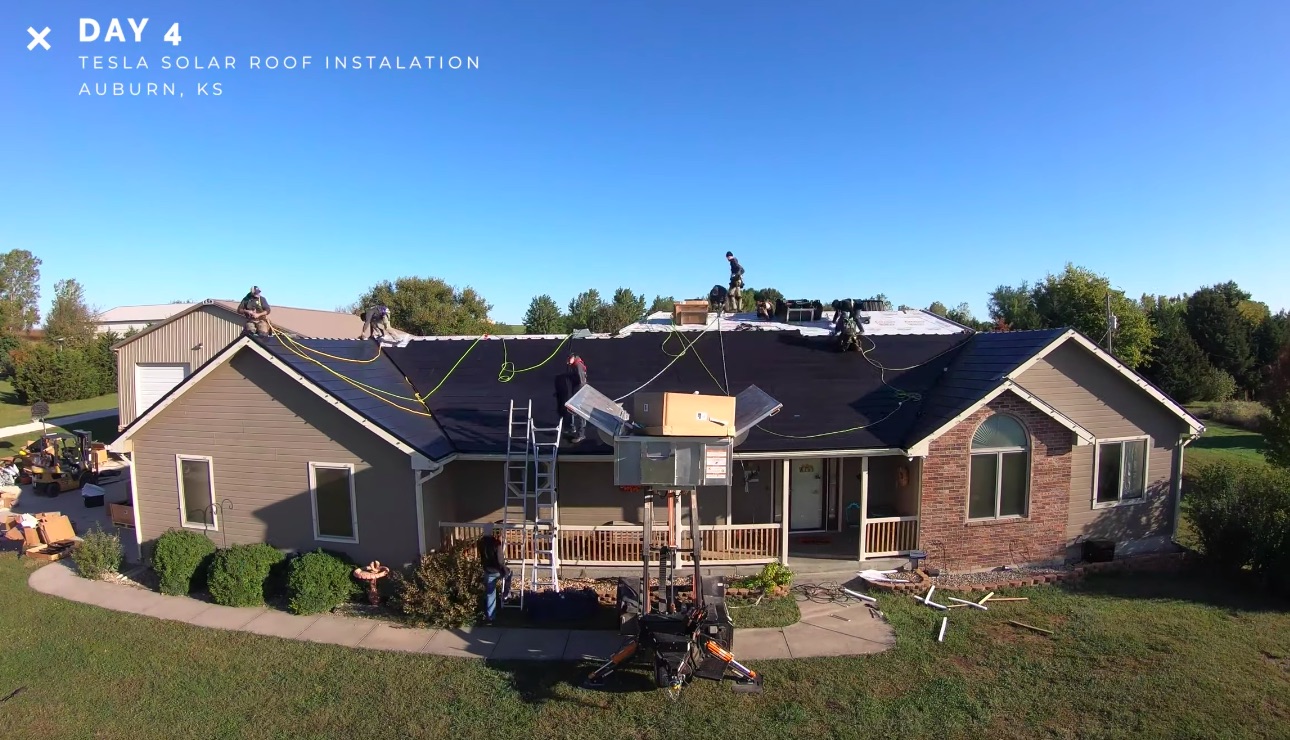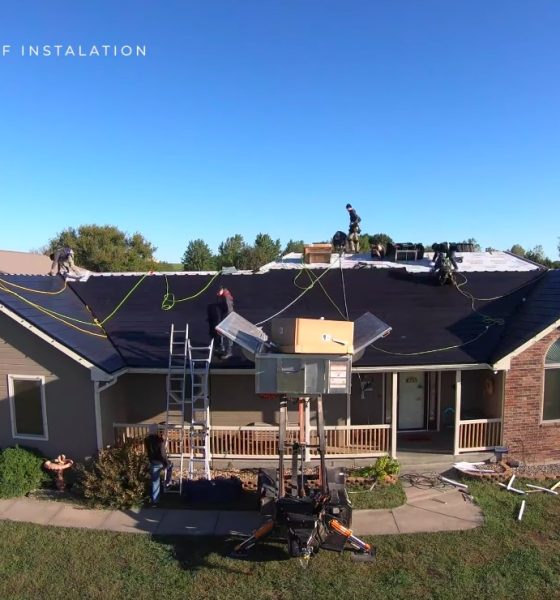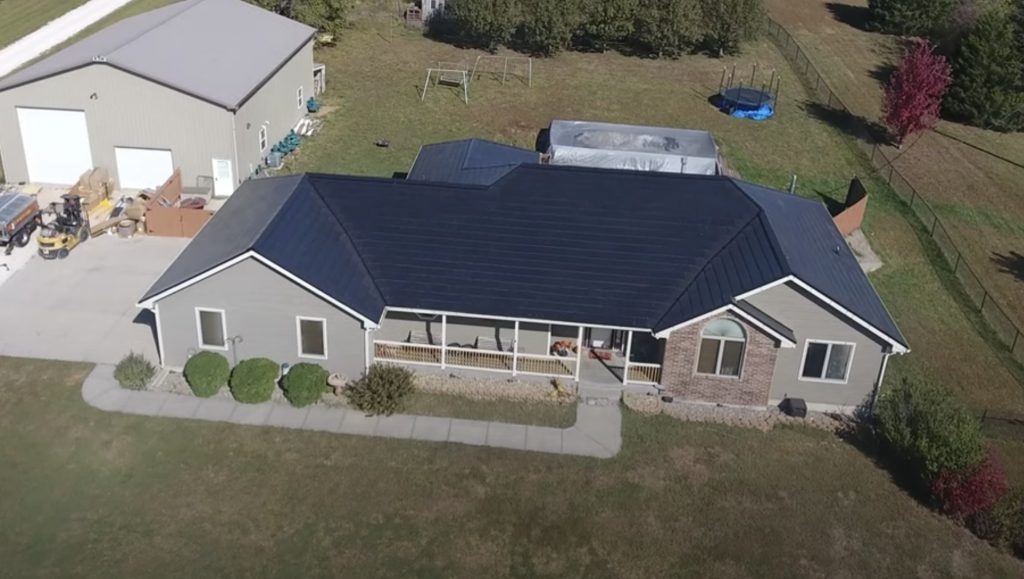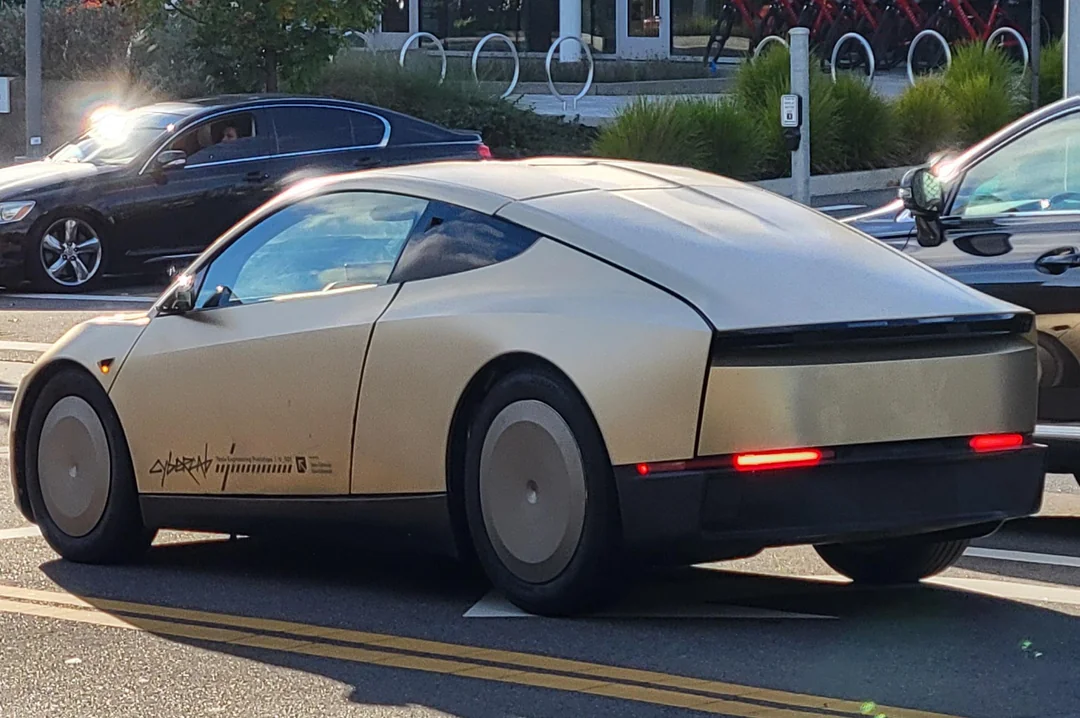

News
Tesla Solar Roof 15kW installation completed in 4 days: Time-lapse video
A recent video posted by Weddle and Sons Roofing has revealed how fast a 4,000 sq.ft. (about 372 sq.m) roof could be replaced with Tesla Energy’s Solar Roof tiles. The roofing company installed a sizeable 15kW Tesla Solar Roof system on a Topeka, Kansas house. The entire installation, including PV tiles, glass tiles, and flashings, took a total of four days to complete.
The Friday before Weddle and Sons Roofings installed Tesla Solar Roof, the existing roof and dry-in with double-layer Firestone underlayment was torn off the house. Based on the roofing company’s description, tearing off the existing roof seemed to take only one day.
In total, the 15kW Tesla Solar Roof installation, covering 4,000 sq.ft. (about 372 sq.m) seemed to take only five days, including the tear-down of the old roof. For comparison, it usually takes several days to install a new roof, depending on the material used.
According to amconstruct.com, the estimated time for roof installations are as follows:
- Wooden Shingles – 3 – 4 days
- Slate Tiles and Shingles – 6 – 7 days
- Asphalt Shingles – 1 – 2 days
- Concrete Tiles and Shingles – 8 – 9 days

Elon Musk announced the release of Tesla Solar Roof Version 3 during the EV automaker’s Q3 earnings call in 2019. Tesla scaled-up production of its Solar Roof at Gigafactory New York once Version 3 was ready.
Installation for the latest iteration of Solar Roof steadily picked up at the beginning of this year, before COVID broke out. In February, Tesla CEO Elon Musk tweeted that the company was planning to ramp Solar Roof installation across the United States.
Along with the announcement, Musk included a link to Tesla’s Solar Roof Team page, subtly inviting people to apply for the company’s open positions for roofers, installers, and electricians. Musk has stated in the past that Tesla will need more manpower (i.e. roofers, installers, and electricians) to ramp Solar Roof installation.
COVID ultimately stalled some of Tesla Energy’s progress with production and installation of Solar Roof V3. However, Elon Musk and the rest of the Tesla team remained positive that Solar Roof installation could get back up and running despite the pandemic.
“And internally, we want to have at least 1,000 Solar Roof install teams with — and taking a week or perhaps a little less than a week to do an install, which gets you 1,000 a week roof installations. We see demand is good. Production is good. So it’s really all about the install,” said Elon Musk during the Q1 2020 earnings call.
The CEO also talked about Solar Roof’s rising demand globally. He alluded to expanding Tesla Solar Roof installations internationally by the end of the year back in February 2020 before the pandemic hit.
“And then like I said, also build out the training, the very diverse group of companies in the roofing industry to also install Solar Roof that, I think will scale — allow us to scale far beyond 1,000 a week. We’re also seeing a lot of interest outside of North America. So we do expect this to be a product that is international and actually seeing a tremendous amount of interest from China on the Solar Roof. So we’re confident, this will be a very significant product for the Company over time,” Musk said.
Watch a timelapse of Weddle and Sons Roofing’s Tesla Solar Roof installation in the video below.

News
Tesla Model 3 named New Zealand’s best passenger car of 2025
Tesla flipped the switch on Full Self-Driving (Supervised) in September, turning every Model 3 and Model Y into New Zealand’s most advanced production car overnight.

The refreshed Tesla Model 3 has won the DRIVEN Car Guide AA Insurance NZ Car of the Year 2025 award in the Passenger Car category, beating all traditional and electric rivals.
Judges praised the all-electric sedan’s driving dynamics, value-packed EV tech, and the game-changing addition of Full Self-Driving (Supervised) that went live in New Zealand this September.
Why the Model 3 clinched the crown
DRIVEN admitted they were late to the “Highland” party because the updated sedan arrived in New Zealand as a 2024 model, just before the new Model Y stole the headlines. Yet two things forced a re-evaluation this year.
First, experiencing the new Model Y reminded testers how many big upgrades originated in the Model 3, such as the smoother ride, quieter cabin, ventilated seats, rear touchscreen, and stalk-less minimalist interior. Second, and far more importantly, Tesla flipped the switch on Full Self-Driving (Supervised) in September, turning every Model 3 and Model Y into New Zealand’s most advanced production car overnight.
FSD changes everything for Kiwi buyers
The publication called the entry-level rear-wheel-drive version “good to drive and represents a lot of EV technology for the money,” but highlighted that FSD elevates it into another league. “Make no mistake, despite the ‘Supervised’ bit in the name that requires you to remain ready to take control, it’s autonomous and very capable in some surprisingly tricky scenarios,” the review stated.
At NZ$11,400, FSD is far from cheap, but Tesla also offers FSD (Supervised) on a $159 monthly subscription, making the tech accessible without the full upfront investment. That’s a game-changer, as it allows users to access the company’s most advanced system without forking over a huge amount of money.
News
Tesla starts rolling out FSD V14.2.1 to AI4 vehicles including Cybertruck
FSD V14.2.1 was released just about a week after the initial FSD V14.2 update was rolled out.

It appears that the Tesla AI team burned the midnight oil, allowing them to release FSD V14.2.1 on Thanksgiving. The update has been reported by Tesla owners with AI4 vehicles, as well as Cybertruck owners.
For the Tesla AI team, at least, it appears that work really does not stop.
FSD V14.2.1
Initial posts about FSD V14.2.1 were shared by Tesla owners on social media platform X. As per the Tesla owners, V14.2.1 appears to be a point update that’s designed to polish the features and capacities that have been available in FSD V14. A look at the release notes for FSD V14.2.1, however, shows that an extra line has been added.
“Camera visibility can lead to increased attention monitoring sensitivity.”
Whether this could lead to more drivers being alerted to pay attention to the roads more remains to be seen. This would likely become evident as soon as the first batch of videos from Tesla owners who received V14.21 start sharing their first drive impressions of the update. Despite the update being released on Thanksgiving, it would not be surprising if first impressions videos of FSD V14.2.1 are shared today, just the same.
Rapid FSD releases
What is rather interesting and impressive is the fact that FSD V14.2.1 was released just about a week after the initial FSD V14.2 update was rolled out. This bodes well for Tesla’s FSD users, especially since CEO Elon Musk has stated in the past that the V14.2 series will be for “widespread use.”
FSD V14 has so far received numerous positive reviews from Tesla owners, with numerous drivers noting that the system now drives better than most human drivers because it is cautious, confident, and considerate at the same time. The only question now, really, is if the V14.2 series does make it to the company’s wide FSD fleet, which is still populated by numerous HW3 vehicles.
News
Waymo rider data hints that Tesla’s Cybercab strategy might be the smartest, after all
These observations all but validate Tesla’s controversial two-seat Cybercab strategy, which has caught a lot of criticism since it was unveiled last year.

Toyota Connected Europe designer Karim Dia Toubajie has highlighted a particular trend that became evident in Waymo’s Q3 2025 occupancy stats. As it turned out, 90% of the trips taken by the driverless taxis carried two or fewer passengers.
These observations all but validate Tesla’s controversial two-seat Cybercab strategy, which has caught a lot of criticism since it was unveiled last year.
Toyota designer observes a trend
Karim Dia Toubajie, Lead Product Designer (Sustainable Mobility) at Toyota Connected Europe, analyzed Waymo’s latest California Public Utilities Commission filings and posted the results on LinkedIn this week.
“90% of robotaxi trips have 2 or less passengers, so why are we using 5-seater vehicles?” Toubajie asked. He continued: “90% of trips have 2 or less people, 75% of trips have 1 or less people.” He accompanied his comments with a graphic showing Waymo’s occupancy rates, which showed 71% of trips having one passenger, 15% of trips having two passengers, 6% of trips having three passengers, 5% of trips having zero passengers, and only 3% of trips having four passengers.
The data excludes operational trips like depot runs or charging, though Toubajie pointed out that most of the time, Waymo’s massive self-driving taxis are really just transporting 1 or 2 people, at times even no passengers at all. “This means that most of the time, the vehicle being used significantly outweighs the needs of the trip,” the Toyota designer wrote in his post.
Cybercab suddenly looks perfectly sized
Toubajie gave a nod to Tesla’s approach. “The Tesla Cybercab announced in 2024, is a 2-seater robotaxi with a 50kWh battery but I still believe this is on the larger side of what’s required for most trips,” he wrote.
With Waymo’s own numbers now proving 90% of demand fits two seats or fewer, the wheel-less, lidar-free Cybercab now looks like the smartest play in the room. The Cybercab is designed to be easy to produce, with CEO Elon Musk commenting that its product line would resemble a consumer electronics factory more than an automotive plant. This means that the Cybercab could saturate the roads quickly once it is deployed.
While the Cybercab will likely take the lion’s share of Tesla’s ride-hailing passengers, the Model 3 sedan and Model Y crossover would be perfect for the remaining 9% of riders who require larger vehicles. This should be easy to implement for Tesla, as the Model Y and Model 3 are both mass-market vehicles.









